Pinning It Down (Part 1): Not the Usual Pinterest Post
It seems like you can’t go anywhere on the web without hearing about Pinterest. You’re probably either a devoted user or have heard just enough that it’s at least on the edge of your consciousness. If you think of it as just one more social network, you may be disinclined to get involved, but the organizational benefits, whether or not you use the social features, are worth exploring.
Launched in March 2010 and accessible by invitation only, by last August, Time Magazine had named Pinterest one of the Top 50 web sites of 2011. By December, Pinterest entered the elite as one of top 10 social networks by number of users. But the uninitiated might still wonder…what is it?
Pinterest, like its less well known clones and sister sites, centers around the concept of curating visuals the way a museum curator selects, organizes and oversees the items in a collection. It follows the idea of a bulletin board or pin board, where you take the digital equivalent of snapshots, comics, magazine ads and “food porn” recipe photos and create a themed board, or series of boards. It’s a bit like your seventh grade locker.
But pin boards don’t just enable you to easily clip the visuals you like and gather them together. It’s the 21st century, so there has to be a social element. Everything you clip and pin is visible to others, both friends and strangers, who can re-pin what you’ve pinned and treat it like it’s their very own.
WHY YOU SHOULD PIN PINTEREST (AND ITS PALS)
Pin boards provide an organizational framework and creative outlet while cutting down on tangible and digital clutter. As a professional organizer, I’ve been intrigued to find that pin board usage cuts down on clutter in multiple ways:
Fewer paper clippings — I often find snow drifts of magazines and catalogs in clients’ spaces. If they’re not keeping the whole Southern Living or O, they’re piling up clippings of visually appealing items, creating a two-dimensional hoard of the things they’d like to possess in three dimensions. In an era where practically every magazine and catalog page is duplicated on the web, it’s easy to find an image and digitally clip it for safekeeping on a pin board. Trees are breathing a sigh of relief.
Less Printing — In what should theoretically be a paperless age, people are still printing recipes and food photos, online catalog pages, new car specs, fashion ideas and more. If you were confident that all of the pretty visuals that interested you were digitally tucked away, you might feel more at ease about skipping the print queue.
Less bookmark clutter — We’ve previously talked about how bookmarklets for sites like Instapaper allow you to limit printing by saving articles and posts to read later, without cluttering your computer with bookmarks you’ll never remember to revisit or use. Pin boards take this a step further because you can see what you’ve pinned in a quick scrolling glance.
Pin boards have other advantages in addition to the organizational aspects. Professionals and business owners can use pin boards to promote their businesses. Research has found that Pinterest sends more traffic to company websites and blogs than YouTube, Google+ and LinkedIn combined and that more people spend time “pinning” than conversing on Facebook. As 90% of Pinterest users are women, it’s an especially prime spot for marketing to female consumers. While marketing is outside the scope of this post, you may want to check out two recent articles on the subject:
Copyblogger’s 56 Ways To Market Your Business On Pinterest
Social Media Examiner’s 26 Tips For Using Pinterest For Business
Finally, I’ve observed one other advantage of pin boards over other social networking sites, and indeed, over other activities on the web, like reading articles and blogs. Pinning is calming. It’s hard to go anywhere on Facebook or Twitter or the blogosphere without running into something that makes your blood boil, whether it’s a political diatribe, a sign of cultural apocalypse or just egregious spelling and grammar errors that make one want to cry.
But pinning is serene — an intellectual palate cleanser. The rare comments are almost uniformly polite and encouraging, sharing in your delight at a photo of kittens snuggling stuffed animals or raindrops on roses. Pin boards are the Pause button of the web.
WHY YOU MIGHT PULL THE PIN
It can be a time sink. Like any social site — and, indeed, like most of the web — it’s easy to get sucked in and lose track of time. Remember: you don’t have to give in to the social side of it. In all cases, you can use Pinterest and other pin boards to save and organize visuals you like, as you go about your daily surfing, without seeking out friends’ and strangers’ pins. You can get the benefit while limiting, or completely avoiding, everyone else, and unlike “likes” and “retweets,” nobody’s really keeping track of how much other people are repinning their pins.
Privacy is at a premium. On Pinterest, you cannot create a private collection of pins. Everything you pin is visible to everyone else. If you’re collecting pictures for personal reasons, or wish to surprise someone with the plans you make based on pinned visuals, Pinterest will not accommodate you. (Some of the clones, however, do allow private pinning.)
Copyright violations are worrisome. In recent weeks, a hubbub has arisen over the issue of how users pin, and therefore, publish, copyrighted works in their own collections. These are then shared socially and exponentially, both on pin boards and on other social networks, without authorization or attribution. Pinterest purports to take copyright seriously, but the jury is out on what these sites might mean, long-term. For more on this topic, you may wish to read:
A Lawyer Who Is Also A Photographer Just Deleted All Of Her Pinterest Boards Out of Fear
What You Should Know About Pinterest and Copyright
Pinterest, Copyright and Terms of Service
PINTEREST AND PALS
To borrow from an old saying, if you build a better mouse trap and take a picture of it, and then post it on the web, lots of people will repin it and eventually the world will beat a path to your door.
Pinterest is widely seen as a women’s playground. While that’s not the whole story, many of the pinned themes — food, fashion and decor — lend themselves to stereotyping. Today, we’ll look at a number of those possibly (but not exclusively) femme-centric pin-a-likes. Next week, we’ll examine specialty sites targeting men (there are more than you think), and other niche pin boards.

Pinterest is the original pin board-based social photo-sharing site. In their own words:
“Pinterest lets you organize and share all the beautiful things you find on the web. People use pinboards to plan their weddings, decorate their homes, and organize their favorite recipes. Best of all, you can browse pin boards created by other people. Browsing pin boards is a fun way to discover new things and get inspiration from people who share your interests.”
Paper Doll is not particularly girlie — I have no wedding plans, no decor and no recipe boards, though I do have one non-organizing board with very yummy-looking food.
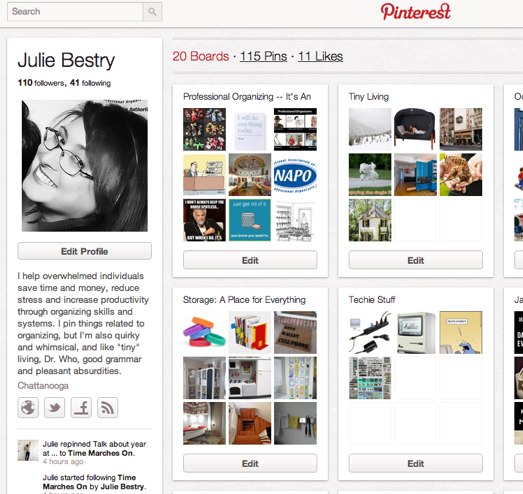
Simply install a bookmarklet in your browser bar. As you surf the web and find a visual you like, click the bookmarklet (or a Pinterest icon a site owner may have already installed) to alert Pinterest you wish to pin this photo to one of your pre-existing collections (boards) or create a new board. Name the board, name the pin and write some brief descriptive copy, and even opt to post your find to Twitter and/or Facebook. Follow others’ individual boards (or all of their collections in one fell swoop) and surf Pinterest to see all users’ contributions or just those of the people you follow.

Pinspire — is a German-based pin board allowing international users to “Discover, collect and share.” It appears to be an exact duplicate (some might say copycat) of Pinterest, down to the color scheme and layout, with one appealing twist — users may join immediately via Facebook or Twitter authorizations. No invitation is necessary.
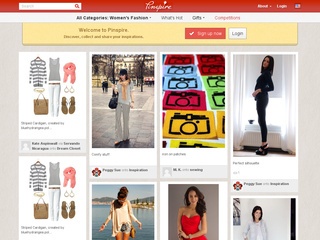
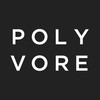
Polyvore, with the motto “Clip, Style, Share,” is one of the biggest sites you’ve probably never heard of! One of the web’s largest fashion community sites, it has more than 13 million unique monthly visitors in a global community that has created over 42 million wardrobe “sets” shared across the web.
Polyvore is a pin board for true fashionistas. Grab individual photos as if you were tearing apart magazine layouts, then recombine items to your heart’s desire to get a handle on the kinds of wardrobes you want to create.
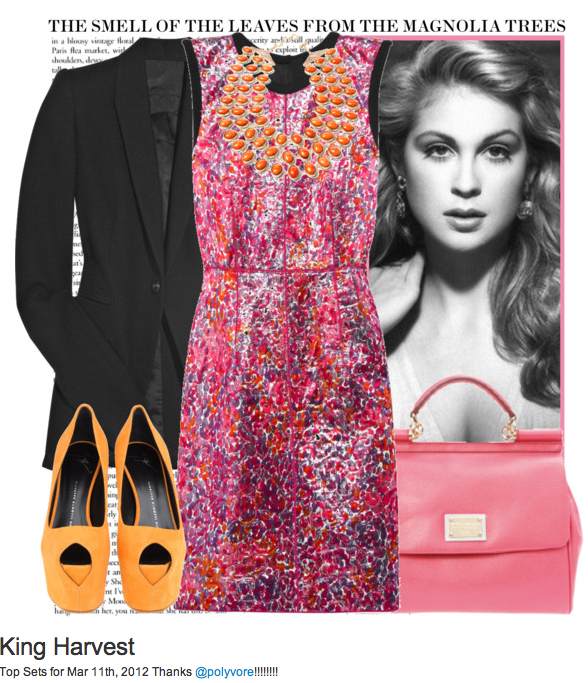
On the same page with the collage of the items you’ve “torn” from elsewhere, you’ll find the individual items in the set, each with its pertinent purchase information.

There’s even an Ask section for seeking fashion advice from fellow Polyvorians.
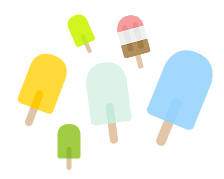
Fancy calls itself “part store, blog, magazine and wishlist,” and is definitely consumer-oriented, encouraging users to follow high-end retailers’ collections and unlock special deals as they add to their personal catalogs. Connect with Twitter or Facebook, then drag the bookmarklet to your browser bar and start “fancying” the things you might want to buy! Alternatively, you can upload photos from your hard drive or add fancied items via email, attaching visuals and addressing them to your personalized Fancy address.
Fancy has some of the most visually arresting photos of travel destinations, high-tech gadgets and the hautest of haute couture, but a much lower cutesie quotient than Pinterest. Browse the entire site or search by categories, stores or brands. You can make catalogs, as well as followed category lists, private, and earn social achievement badges for curating your visuals:
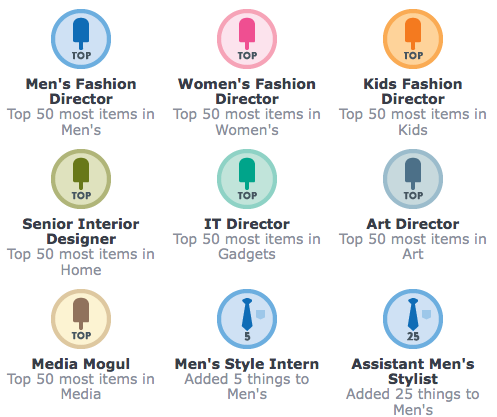
Paper Doll must note that navigation of Fancy is the most unintuitive of all the pin boards I’ve tried.

We Heart It calls upon you to “organize and share the things you love.” Sign up via Twitter or Facebook, then automatically follow all of your friends from Twitter, Facebook or Gmail from there. Create a set (like a board on Pinterest) and then start hearting things from We Heart It or elsewhere.
With a seriously poppy fashion-oriented bent, We Heart It skews female and young, more teens and college age — think of it as the daughter or (much younger) sister of Pinterest. This may explain why, when I searched for “suits” I found pictures of men in suits…and girls in bathing suits that appeared to be made of dental floss. Pinning from other sites may yield the mature “hearter” more appropriate choices.
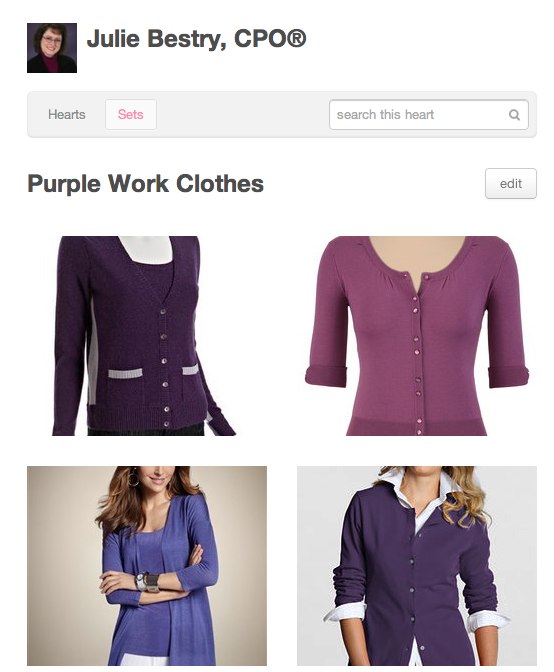
Pin yourself a note to return next week, when we explore alternative boards for men and sites that focus on videos, graphic design, and other nifty pinning niches.




Follow Me